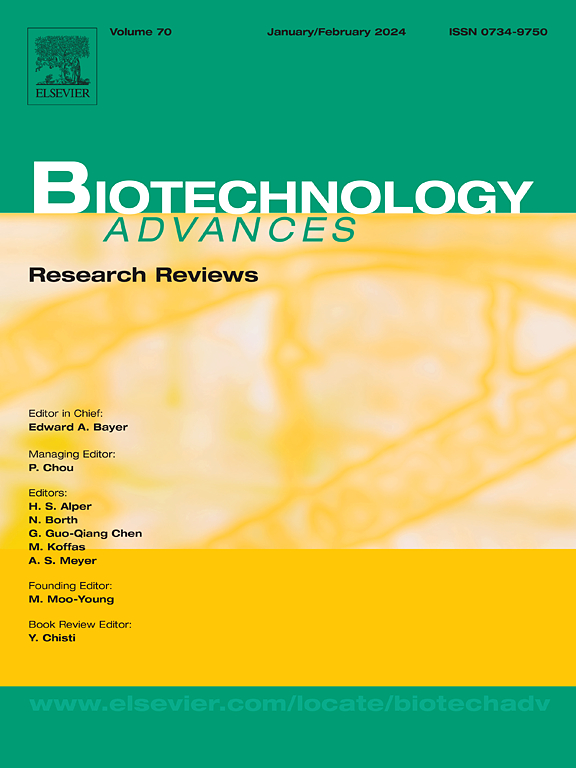工业应用的工程微生物脂肪酶研究进展。
IF 12.5
1区 工程技术
Q1 BIOTECHNOLOGY & APPLIED MICROBIOLOGY
引用次数: 0
摘要
脂肪酶是一种存在于动物、植物和微生物中的绿色生物催化剂,因其多功能性、特殊的特异性和易于生产和使用而广泛应用于农业、生物燃料、化妆品、化工、食品、制药和纺织等行业。然而,微生物脂肪酶的多种异构体的存在往往限制了它们的应用,并且需要昂贵的纯化。在工业应用中,对提高脂肪酶的稳定性、活性和特异性的需求也在不断增长。该领域的一个新兴研究方向是将合成生物学和工程工具结合起来设计用于各种工业应用的新型脂肪酶。蛋白质工程、固定化技术和人工智能(AI)工具的最新进展显著提高了脂肪酶的催化性能。本文综述了脂肪酶的分类、一般特性、工业生产和应用,以及工程脂肪酶和产脂微生物细胞在开发新型脂肪酶生物工艺和生物制品方面的最新进展。本文章由计算机程序翻译,如有差异,请以英文原文为准。
Recent advances in engineering microbial lipases for industrial applications
Lipases, a green biocatalyst found in animals, plants, and microorganisms, are widely used in the agricultural, biofuel, cosmetics, chemical, food, pharmaceutical, and textile industries due to their versatility, exceptional specificity, and ease of production and use. However, the presence of multiple isoforms of microbial lipases often limits their applications and requires costly purification. There are also growing demands for improved lipase stability, activity, and specificity in industrial applications. One emerging research direction in this field is integrating synthetic biology and engineering tools to design novel lipases for diverse industrial applications. Recent progress in protein engineering, immobilization technologies, and artificial intelligence (AI) tools have significantly improved lipase catalytic performance. This paper provides a comprehensive review of the classification, general characteristics, industrial production and applications of lipases and recent advances in engineering lipases and lipase-producing microbial cells to develop novel lipase-based bioprocesses and bioproducts.
求助全文
通过发布文献求助,成功后即可免费获取论文全文。
去求助
来源期刊

Biotechnology advances
工程技术-生物工程与应用微生物
CiteScore
25.50
自引率
2.50%
发文量
167
审稿时长
37 days
期刊介绍:
Biotechnology Advances is a comprehensive review journal that covers all aspects of the multidisciplinary field of biotechnology. The journal focuses on biotechnology principles and their applications in various industries, agriculture, medicine, environmental concerns, and regulatory issues. It publishes authoritative articles that highlight current developments and future trends in the field of biotechnology. The journal invites submissions of manuscripts that are relevant and appropriate. It targets a wide audience, including scientists, engineers, students, instructors, researchers, practitioners, managers, governments, and other stakeholders in the field. Additionally, special issues are published based on selected presentations from recent relevant conferences in collaboration with the organizations hosting those conferences.
 求助内容:
求助内容: 应助结果提醒方式:
应助结果提醒方式:


